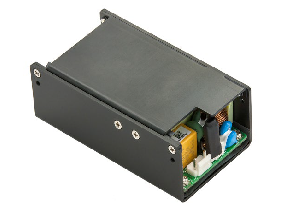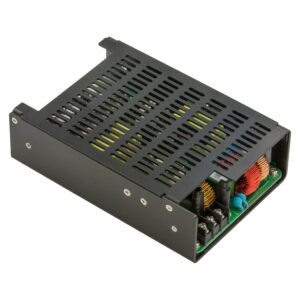PROTECTED FROM THE ELEMENTS!
Ingress Protected (IP Rated) AC/DC Power Supplies
ETA-USA offers ITE, Medical, and Ruggedized AC/DC Power supplies for your application.
Contact an ETA-USA Representative for ordering information, pricing, lead times, and CAD models. Products can be built in as little as 5 weeks
IP42 Rated ITE & Medical Grade AC/DC Adapters
DTD130 Series-IP42 DOE VII AC/DC External Adapter

- Universal Input 90~264 VACin; 50/60Hz with 3-prong IEC320-C14, Class I AC inlet (Standard)
- Optional IEC320-C6, -C8, or -C18 AC inlet available upon request
- Meets DOE VII and EU ErP power consumption requirements
- ITE rated 5000m
- Output Voltages: 12, 19, 24, 36, & 48 VDC
- -20C~+60C operational temperature
- >300,000 hour MTBF (Telcordia SR-332)
- Custom DC cable and connector options with Low MOQ
DTMF210 Series-IP42 DOE VII AC/DC External Adapter
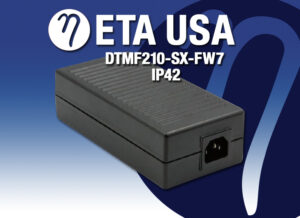
- Universal Input 90~264 VACin; 50/60Hz with 3-prong IEC320-C14, Class I AC inlet
- Meets DOE VII and EU ErP power consumption requirements
- ITE rated 5000m & Medical rated 3000m operational altitude
- 2X MOOP
- Output Voltages: 12, 15, 19, 24, 28, 36, & 48 VDC
- -20C~+60C operational temperature
- >350,000 hour MTBF (Telcordia SR-332)
- Custom DC cable and connector options with Low MOQ
DTMF300 Series-DOE VI AC/DC External Adapter

- Universal Input 90~264 VACin; 50/60Hz with 3-prong IEC320-C14, Class I AC inlet with I/O switch (Standard)
- Optional IEC320-C6, -C8, or -C18 AC inlet available upon request
- Meets IP42 if ordered without I/O switch
- Meets DOE VI power consumption requirements
- ITE rated 5000m & Medical rated 5000m operational altitude
- 2X MOOP
- Output Voltages: 12, 15, 19, 24, 28, 48 & 54 VDC
- -30C~+60C operational temperature
- >200,000 hour MTBF
- Custom DC cable and connector options with Low MOQ
DTMF400 Series-DOE VI AC/DC External Adapter

- Universal Input 90~264 VACin; 50/60Hz with 3-prong IEC320-C14, Class I AC inlet
- Meets IP42
- Meets DOE VI power consumption requirements
- ITE rated 5000m & Medical rated 3000m operational altitude
- 2X MOOP
- Output Voltages: 12, 19, 24, 28, 48 VDC
- -30C~+60C operational temperature
- >230,000 hour MTBF
- Custom DC cable and connector options with Low MOQ
Ruggedized Semi-Custom IP6x AC/DC Power Supplies
HZD500 Series- 500W IP66 Rated Power Supply Designed for Explosive Environments
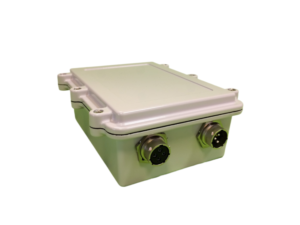
- Universal input: 90~264 VAC in; 50/60/400Hz
- Output voltages: 12, 24, 28, 48 (fixed)
- IP67 rated enclosure. IP66 rated for Hazardous Environments
- Meets IEC 60079-0 2017: General & IEC 60079-7: 2015 safety “E” (with connector housing)
- IP64 version with Power On LED and output-off signal available
- Pole Mount Heatsink available for high temp environments
- Optional Mil-Std 461 CE 102 Compliant model available
- Powder Coat, anodized, or chem-film chromate finishes available.
CHHS Series- 1400W IP67 Dual Output Power Supply-User Serviceable

- Universal input: 90~264 VAC in; 50/60/400Hz
- Two isolated 700W power modules with floating outputs
- Output Voltages: 12, 24, 28, 48 (fixed)
- IP67 rated enclosure with Optional Heatsink for High Temperature Environments
- Power On and Output Good LED
- Emergency Shut Off switch
- User serviceable interface with cord grips for customer wiring
SL1100 Series- 1,100W IP65 Slim Form Factor
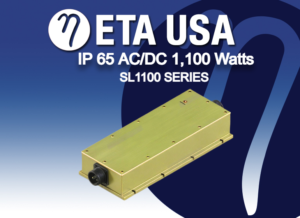
- Universal input: 90~264 VAC in; 50/60/400Hz
- Output voltages: 12, 24, 28, 48 (Non Standard Voltages 9V~56 available upon request)
- Output Power On LED
- SAE 5015 I-O or Permanent Wired Interface options
- Operating Temperature (Ambient): -40°C~+70°C
- Additional Options: Remote On/Off, external voltage trim (10%, 20%), Vout, Iout, and internal temperature reporting (I2C protocol), Anodized Enclosure
- Can be ordered to meet Mil-Std 461 EMI (CE101, CE102, RE102, RE103) & Mil Std 1399
- RoHS and Non-RoHS versions available
ETA-USA has over 30 years of industry experience providing custom power supply solutions to its customers. Additional custom requirements are welcomed.

